Over the last few weeks, we’ve explored the ecology of fear in oyster reefs. What makes oysters too scared to eat, potentially keeping them from reaching market size or filtering water? What makes mud crabs too scared to eat oysters, giving the oysters a better chance to succeed? New research by Dr. Randall Hughes and Dr. David Kimbro might change the way we understand fear in mud crabs.
Dr. Randall Hughes FSU Coastal & Marine Lab
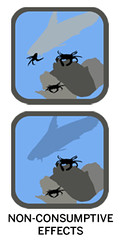 When we started the In the Grass, On the Reef project, Rob (WFSU-TV Producer Rob Diaz de Villegas) embarked on a crash course learning about oyster reefs and salt marshes, biodiversity, and non-consumptive predator effects. While you’re most likely familiar with those first few terms, the last one – non-consumptive effects – is a bit of a mouthful and hasn’t exactly made the list of new slang words of 2013. The term refers to the ability of predators to SCARE their prey even when they don’t EAT them, causing the prey to hide, or eat less, or change their size/shape to make it less likely that they will be eaten. Of course, these changes are only possible if the prey realizes the predator is there before getting eaten! There are several “cues” that prey can use: (1) they can see them (visual cues); (2) they can feel them (physical cues); or (3) they can “smell” them (chemical cues). This last category is really common in the ocean, especially with slimy snail or fish predators that give off lots of chemicals into the water!
When we started the In the Grass, On the Reef project, Rob (WFSU-TV Producer Rob Diaz de Villegas) embarked on a crash course learning about oyster reefs and salt marshes, biodiversity, and non-consumptive predator effects. While you’re most likely familiar with those first few terms, the last one – non-consumptive effects – is a bit of a mouthful and hasn’t exactly made the list of new slang words of 2013. The term refers to the ability of predators to SCARE their prey even when they don’t EAT them, causing the prey to hide, or eat less, or change their size/shape to make it less likely that they will be eaten. Of course, these changes are only possible if the prey realizes the predator is there before getting eaten! There are several “cues” that prey can use: (1) they can see them (visual cues); (2) they can feel them (physical cues); or (3) they can “smell” them (chemical cues). This last category is really common in the ocean, especially with slimy snail or fish predators that give off lots of chemicals into the water!
As Rob was learning more about the fish predators that we find on our oyster reefs, he discovered audio clips of the sounds that several of these fish make. Putting 2 and 2 together, he posed a simple question to David and me: Can mud crabs use fish sounds as a cue that their predators are near?
To be quite honest, David and I didn’t have an answer. But, we knew how to find out – do the experiment(s)! We enlisted Housam Tahboub, an undergraduate at the University of Michigan Flint, who wanted to do his summer Honors project in our labs. (Little did he know what he was getting into.) And then we set off on a crash course in bioacoustics, underwater speakers, and crab torture chambers (more on that in a minute).
Rob’s question really has 2 parts:
(1) Can crabs hear (anything)? (They don’t have ears.)
(2) Do crabs respond to the sounds of their fish predators?
To answer #1, we paired up with Dr. David Mann at the University of South Florida. Dr. Mann is an expert in bioacoustics, and particularly in evaluating whether marine critters (primarily fish) can hear different sounds. We modified his methods slightly to accommodate our crabs – basically, we needed to immobilize the crabs on a ‘stretcher’ so that we could insert one electrode near the crab’s antennae, and another in the body cavity to pick up any background “noise” the crab may be produce that was not in response to the acoustic stimuli. Although I know it looks like crab torture, all the crabs survived the experiment!
Once the crab was immobilized and the electrodes were in place, we submerged the crab in a tank full of seawater that had an underwater speaker in it. We then played a series of acoustic stimuli of different volumes and frequencies and quantified the response recorded by the electrode. The really nice thing about this method is that we don’t have to train the crabs to tell us when they hear the noise like in the hearing tests that you and I take!
To tackle question #2, we set up a mesocosm experiment at FSUCML. Each mesocosm (aka, bucket) had sediment, a layer of loose oyster shell to serve as habitat for the crabs, and 5 mud crabs that we collected from nearby oyster reefs. We also added some juvenile clams glued to a few marked oyster shells in each mesocosm – this way, we could count the number of clams eaten over time and determine whether crabs were eating more or less in response to the predator sounds.
To run the experiment, we downloaded sound clips of several different crab predators – toadfish, black drum, and hardhead catfish – as well as 2 non-predators to serve as controls – snapping shrimp and a silent recording. Housam put these on his iPod, connected it to an amplifier and underwater speaker, and we were ready to begin.
(Well, let’s be honest, it wasn’t quite that simple. Housam read a lot of papers to figure out the best methods, spent lots of time collecting crabs, and logged lots of hours (both day and night, in the company of mosquitoes and biting flies) moving the speaker from tank to tank before we finally settled on a good protocol. He even tried all of this in the field! But when his summer ended, Tanya, Phil, and Ryan kindly stepped in to run the rest of the trials we needed.)
But we didn’t stop there. We know from our earlier experiments with Kelly Rooker (another undergraduate researcher) that the crabs don’t eat as much when exposed to water that hardhead catfish have been swimming in, most likely because they can detect chemicals in the water that the fish give off. So which cue generates a stronger response – chemical cues or sound cues? Time for another experiment!
In this version, the mesocosms were assigned to one of 4 combinations: (1) a silent recording, paired with water pumped from a tank holding 2 hardhead catfish into the mesocosm; (2) a recording of a hardhead catfish, paired with water that did not go through the catfish tank; (3) a recording of a hardhead catfish, paired with water from the catfish tank; (4) a silent recording, paired with water that did not go through the catfish tank. We again looked at the number of clams eaten over time to see how the crabs change their behavior.
This project has been a lot of fun, and it never would have happened were it not for Rob’s curiosity. We gave a preview of our results at the Benthic Ecology conference in Savannah, GA, last weekend. But we’ll have to wait until everything is reviewed by other scientists and published in a scientific journal before we can share all of the details here. So stay tuned!
Music in the piece by zikweb.
Black Drum recording used in the video courtesy of James Locascio and David Mann, University of South Florida College of Marine Science.
Catfish and toadfish recordings copyright University of Rhode Island. They were obtained from dosits.org, under these terms:
Copyright 2002-2007, University of Rhode Island, Office of Marine Programs. All Rights Reserved. No material from this Web site may be copied, reproduced, re-published, uploaded, posted, transmitted, or distributed in any way except that you may download one copy of the materials on any single computer for non-commercial, personal, or educational purposes only, provided that you (1) do not modify such information and (2) include both this notice and any copyright notice originally included with such information. If material is used for other purposes, you must obtain permission from the University of Rhode Island. Office of Marine Programs to use the copyrighted material prior to its use.
In the Grass, On the Reef is funded by a grant from the National Science Foundation.

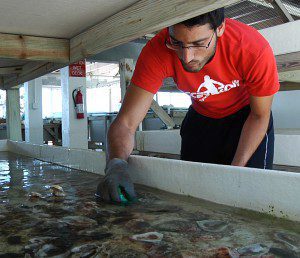
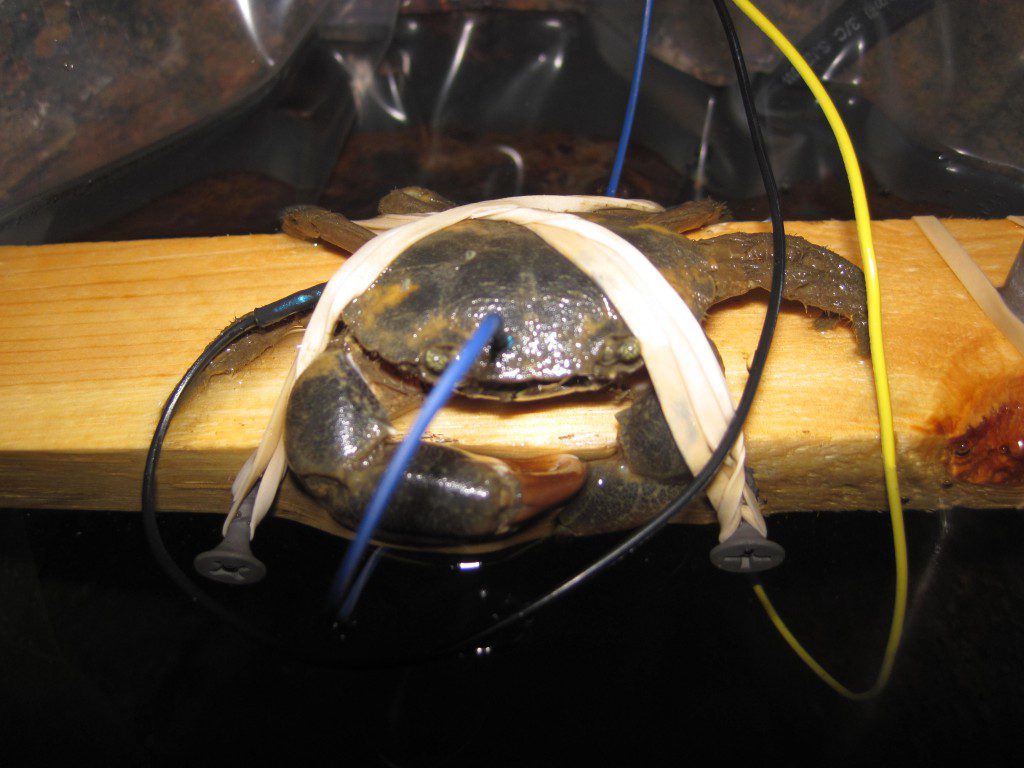
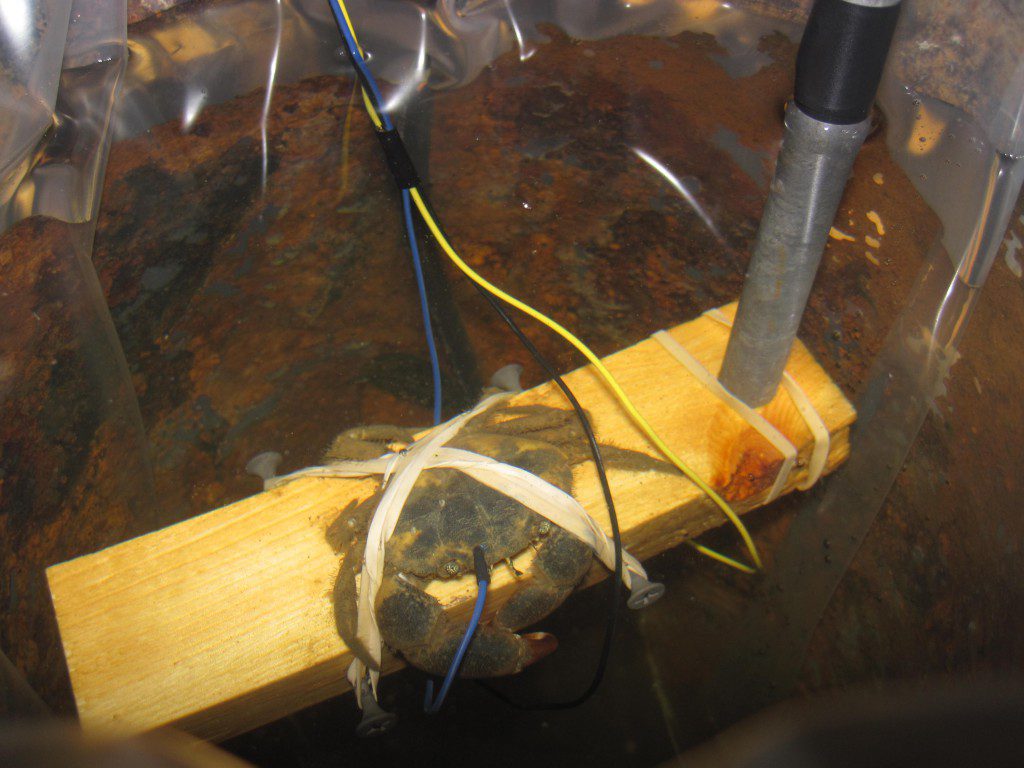
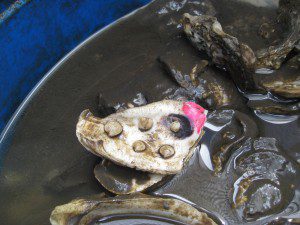
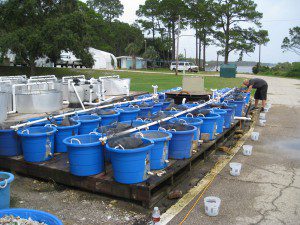
3 comments
This is definitely one of the more surprising things to come out of this collaboration. It’s been fun to watch these studies progress over the last three years!
[…] Donate Skip to content HomeThe ScienceThe “In the Grass, On the Reef” Master PlanCoastal Habitat Quick DictionarySalt MarshIn the Grass- Salt Marsh Biodiversity StudyMeet the Species “In the Grass”Oyster ReefOn the Reef- The Biogeographic Oyster StudyMeet the Species “On (and swimming around) the Reef”Watch Oysters GrowJacksonvilleSaint AugustineAlligator HarborSeagrass BedPredatory Snails, and Prey, of Bay Mouth BarIn the Grass, On the Reef DocumentaryEcoAdventures North FloridaEcoAdventures HomeActivitiesPaddlingHikingBird/ Wildlife WatchingArt/ PhotographyHistory/ ArcheologyApalachicola River and Bay Basin ← Can crabs hear? (A testament to the benefits of collaboration) […]
[…] component to it. Previously, we thought fear was transmitted only chemically, but now we know that crabs can hear. This is […]
Comments are closed.